Five Top Parental Control Network Routers And How To Use Them
Contents
- Introduction
- Secure your router
- Choosing a Router
- The Best Mid-Range: Asus RT-AX3000
- The Best Parental Control: TP-Link Archer AX50 / AX3000
- The Tech-Savvy Option: Synology RT2600ac
- THe Best Mesh Solution: Netgear Orbi AC6000
- Parental Control on a Budget: Asus RT-ACRH12
- Setting Parental Controls
- Conclusion
Introduction
The internet has always been a concern for parents; while it brings knowledge, education, and entertainment into the home, it also brings dangers. Unfortunately, children are now spending more and more time online, exposed to all manner of potential harm. Keeping children safe is always a challenge, especially when their curiosity and instinct to push boundaries can have consequences.

One way that parents can protect the safety of children online is the use of parental controls built into routers that manage when a child can access the internet, how long they can spend online, and what content they are allowed to access.
Secure your router
The router is the internet access point for all devices connected to your network. Setting parental controls at this point will apply web filtering for every device on your network equally. This removes the risk that your child brings a device into the house that hasn't had security controls applied or discovers that a games console has an unknown internet browsing feature.
The most secure control is to use an allow list that restricts browsing to only those websites you have checked and found age-appropriate. An alternative approach is to set up a deny list that blocks access to specific known harmful websites, allowing access to any website not on the list. This option requires a level of trust in your child to not look for harmful content in other locations.
Resources such as this Family Tech Zone article can provide a starting point for your list of websites that your child should avoid.
Choosing a Router
The following routers have been carefully selected based on having a combination of outstanding performance and robust parental controls that are easy to configure.
The Best Mid-Range: Asus RT-AX3000
Overview
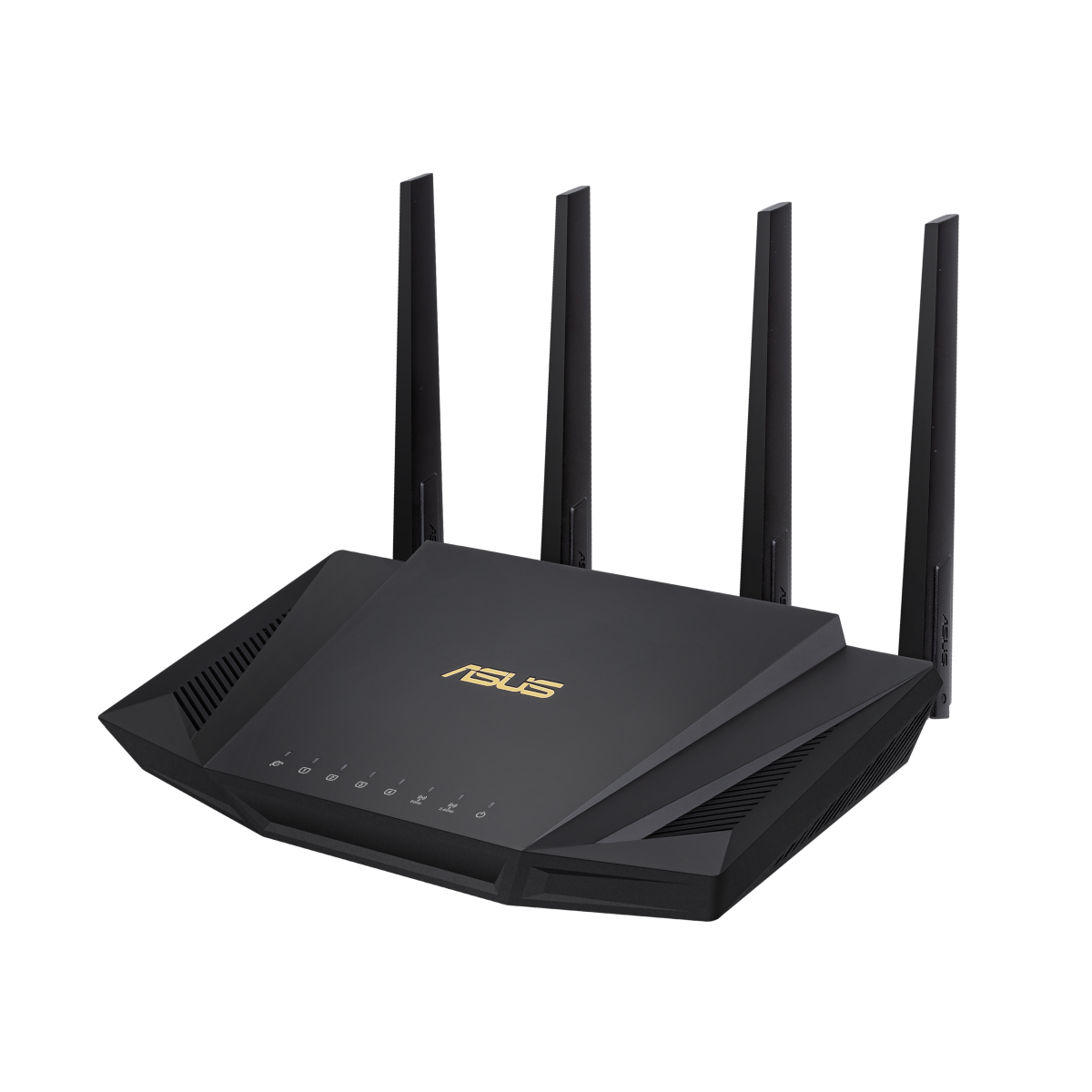
ASUSTek Computer Inc is a Taiwanese manufacturer of computing equipment producing routers and similar equipment for around thirty years. The RT-AX3000 is an affordable mid-range router with good parental controls and excellent security, so this particular model has been included.
Router Features
This router uses sixth-generation Wi-Fi technology with a 160MHz bandwidth and lower latency, offering 3 Gbps throughput, which is excellent for streaming 4K quality movies and playing online games.
Multiple antennas and beamforming technology offer Wi-Fi coverage over reasonably large areas.
A simple configuration through a web browser or app includes setting up a guest Wi-Fi network and monitoring usage.
This product comes with a free lifetime subscription to the AiProtection package, including anti-virus and parental control software. The router also has two-way intrusion detection that blocks incoming and outgoing suspicious packets and infected device blocks.
Performance
Dual-Band wireless managed by a Tri-Core CPU delivers:
- Band 1 - 5 GHz: 2402 Mbps (802.11ax)
- Band 2 - 2.4 GHz: 574 Mbps (802.11ax)
Wireless encryption supports:
- Wi-Fi Protected Access (WPA)-Pre-Shared Key (PSK) & Enterprise
- WPA2-PSK & Enterprise
- WPA3-PSK & Enterprise
- WPS support
VPN Server function supports:
- PPTP
- OpenVPN
Setting Parental Controls
Connecting to the router can be done using Asus's Router app or through a web browser. These include time scheduling and content blocking controls.
Controls are set on a per device basis and to simplify setting for multiple devices, pre-set profiles for age ranges 0 to 6 years, 6 to 12 years, 12 to 18 years, and 18 years plus are provided.
Conclusion
This router is reasonably priced and delivers high-performance Wi-Fi that supports the latest encryption standards. An easy-to-use app and web browser interface make setting up and managing parental controls straightforward. These parental controls are comprehensive and robust and supported with good levels of built-in security.
The Best Parental Control: TP-Link Archer AX50 / AX3000
Overview
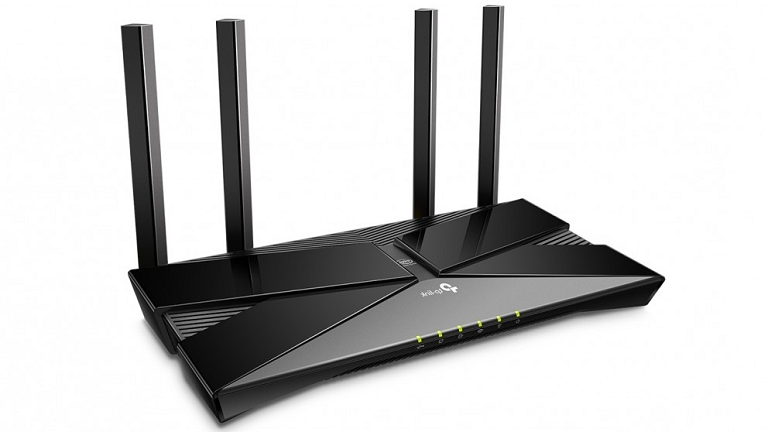
TP-Link Technologies is a Chinese manufacturer of networking equipment producing routers and similar equipment for around twenty-five years. The Archer AX50 is a mid-range router with robust parental controls, so this particular model has been included. The Archer AX50 is also marketed in some countries as the Wi-Fi 6 AX3000, and these two models are the same device.
Router Features
This router uses sixth-generation Wi-Fi technology that is around three times faster than the previous generation with lower latency, offering 3 Gbps throughput, which is ideal for households that do a lot of 4K streaming or have an avid online gamer.
The router will allow more than forty devices to connect, perfect for larger families where everyone has many intelligent devices requiring network connectivity simultaneously.
This product comes with a free lifetime subscription to the TP-Link HomeCare package, including anti-virus and parental control software.
The router also includes a Quality of Service function that prioritizes connected devices that it recognizes as requiring a faster performance over other devices.
TP-Link provides an app to set up and control the router, speeding up and simplifying the installation and configuration process.
Performance
Dual-Band wireless managed by a Dual-Core CPU delivers:
- Band 1 - 5 GHz: 2402 Mbps (802.11ax)
- Band 2 - 2.4 GHz: 574 Mbps (802.11ax)
Wireless encryption supports:
- Wired Equivalent Privacy (WEP)
- WPA2-PSK & Enterprise
- WPA-PSK & Enterprise
VPN Server function supports:
- OpenVPN
- PPTP
Setting Parental Controls
Connecting to the router can be done using TP-Link's Tether app or through a web browser. These include time scheduling and content blocking controls. Blocking can be for specific sites or categories of websites.
Conclusion
This router is reasonably priced but delivers high-performance Wi-Fi with a simple-to-use app to set up and manage parental controls. These parental controls are comprehensive and robust and supported with good levels of built-in security. In addition, while it uses the sixth generation w-fi technology, it is fully compatible with older technologies without performance penalties.
One thing to watch out for is this router does not support the latest WPA3 Wi-Fi encryption standard, and there is currently no planned upgrade to incorporate this.
The Tech-Savvy Option: Synology RT2600ac
Overview
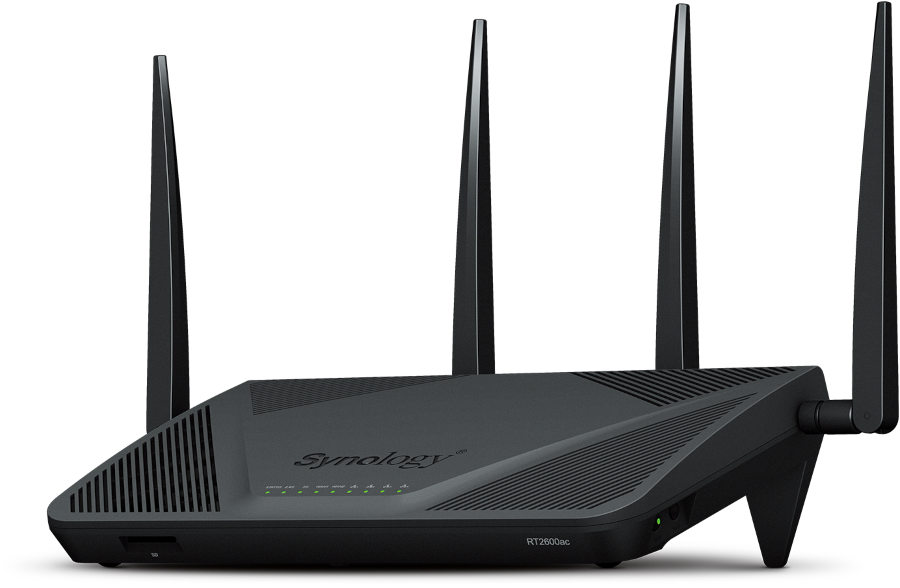
Synology Inc. is a Taiwanese manufacturer of computing equipment producing network storage equipment for around twenty-five years. The RT2600ac differs from their usual product range, a router using sixth-generation Wi-Fi that delivers good performance coupled with a good user interface.
Router Features
This router uses Wi-Fi technology that offers up to 2.5 Gbps throughput for networks handling large traffic volumes such as multiple simultaneous media streams.
The router includes in-built file handling features and an SD card socket that allows files and photos to be downloaded without using a connected device.
TP-Link provides a web interface to set up and control the router, with comprehensive configuration options available for the technologically savvy user.
Performance
Dual-Band wireless managed by a Dual-Core CPU delivers:
- Band 1 - 5 GHz: 1730 Mbps (802.11ac)
- Band 2 - 2.4 GHz: 800 Mbps (802.11ac)
Wireless encryption supports:
- WPA3-PSK & Enterprise
- WPA2-PSK & Enterprise
- WPA-PSK & Enterprise
- WEP
- Opportunistic Wireless Encryption (OWE)
VPN Server function supports:
- OpenVPN
- IPsec
- L2TP
- PPTP
Setting Parental Controls
Connecting to the router to configure controls is done through a web browser. The available options are the most extensive, but the interface is less intuitive than the others.
Conclusion
This router is the costliest and most challenging to configure. Still, the technically competent user can set the most robust parental controls for each user, thanks to the comprehensive configuration options. The Wi-Fi performance is not the best on this list, but it is more than adequate for the demands of a typical family home. This is an excellent option if you know what you're doing, though perhaps anyone looking for simple, foolproof parental controls should look more closely at the alternatives.
THe Best Mesh Solution: Netgear Orbi AC6000
Overview
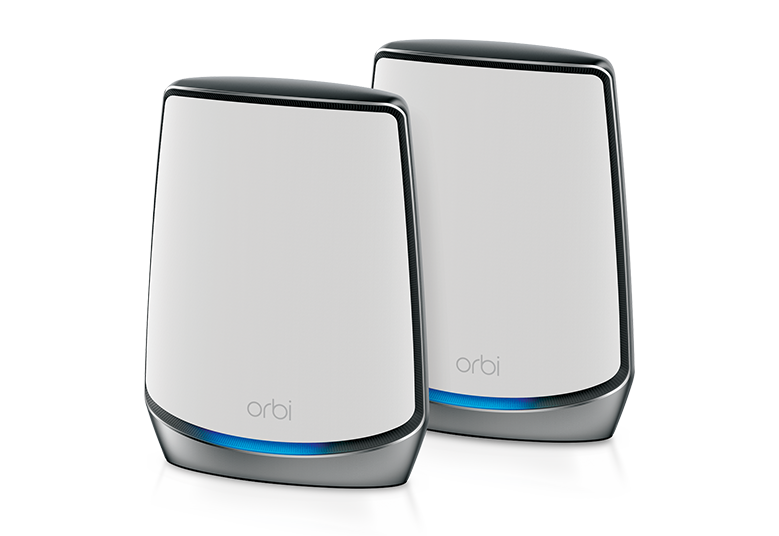
Netgear Inc. is a US-based manufacturer of networking equipment producing routers and similar equipment for around thirty years. The Orbi is one of the best mesh Wi-Fi systems on the market. These are systems where mini hubs are distributed around the home to ensure good Wi-Fi coverage, particularly useful in large properties or where thick stone walls can prevent signals from reaching every corner of every room. The ORBI AC6000 is a whole-home system, also marketed as the RBK50.
Router Features
This router uses sixth-generation tri-band Wi-Fi technology using eight antennas that offer an impressive 6 Gbps throughput. This is perfect for 4K streaming and online gaming.
The router will allow the simultaneous connection of up to two hundred and fifty devices, although a limit of a hundred is recommended to avoid performance issues.
Multiple antennas and beamforming technology offer good Wi-Fi coverage for each hub, and multiple hubs extend this coverage over extensive areas. The router comes with options for the number of satellite hubs. Additional satellite hubs can be subsequently purchased and integrated.
This product comes with the Disney Circle parental control package built-in, and Netgear provides an app to configure the router's basic settings.
Performance
Tri-Band wireless managed by a Quad-Core CPU delivers:
- Band 1 - 5 GHz: 2402 Mbps (802.11ax)
- Band 2 - 5 GHz: 2402 Mbps (802.11ax)
- Band 3 - 2.4 GHz: 1200 Mbps (802.11ax)
Wireless encryption supports:
- WEP
- WPA2-PSK & Enterprise
- WPA-PSK & Enterprise
VPN Server function supports:
- OpenVPN
Setting Parental Controls
Connecting to the router can be done using Netgear's Orbi app or through a web browser.
Controls are set on a per device basis, with the standard content filtering controls available as standard using the Disney Circle application. More advanced content filtering and time scheduling controls are only available by paying for the Disney Circle premium subscription.
Conclusion
This router is one of the best mesh Wi-Fi routers where a standard router can't provide the required coverage throughout a home. However, while it offers incredible performance, this comes at a cost.
A simple to use app is available to set up and manage parental controls provided by the Disney Circle application. However, access to the comprehensive set of control options requires a subscription to a premium service, the same level of control is available for free from other router providers.
Another thing to watch out for is that the Netgear Orbi routers do not support the latest WPA3 Wi-Fi encryption standard and VPN support is also limited.
Parental Control on a Budget: Asus RT-ACRH12
Overview
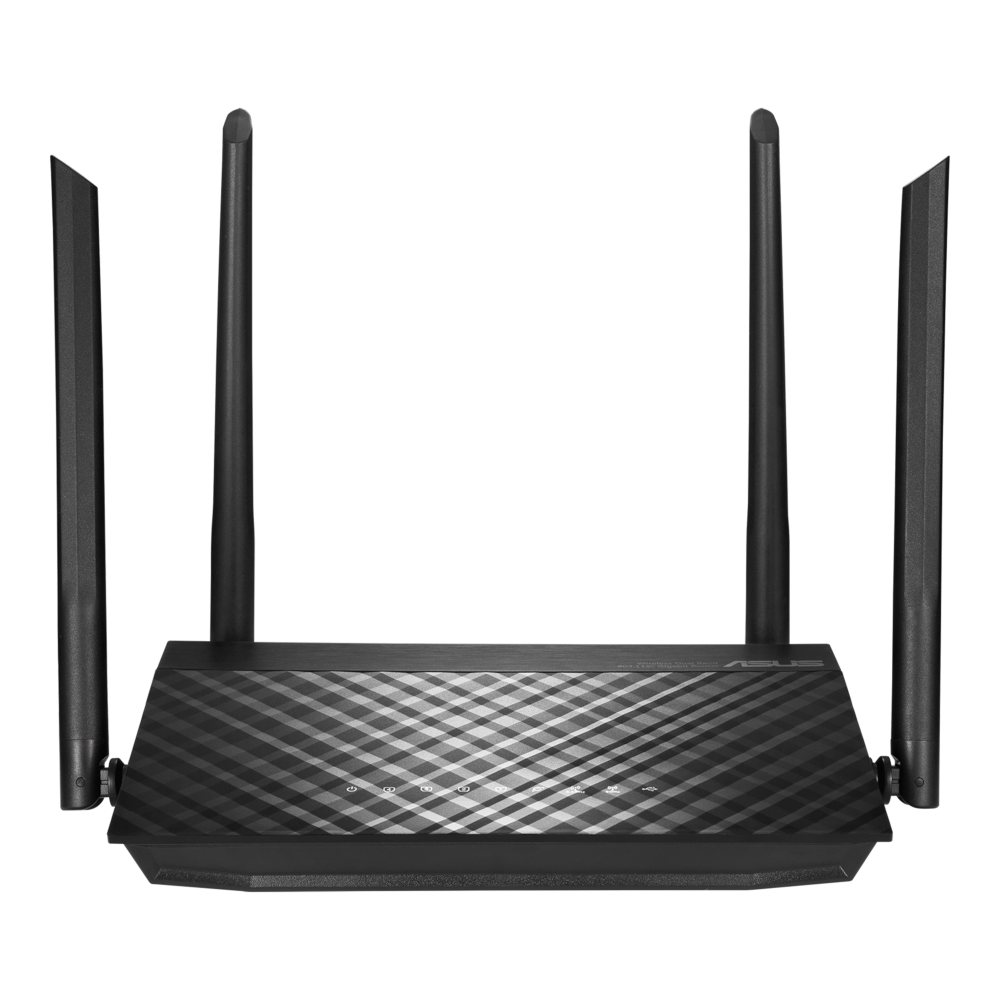
This is the second Asus device listed; this one is at the budget end of the price range for those looking for decent performance with good parental controls at a lower cost. The RT ACRH12 may be fifth-generation, but it can comfortably handle streaming 4K videos.
Router Features
This router offers a not unreasonable 1.2 Gbps throughput which is good enough for households requiring large bandwidth.
A simple configuration through a web browser or app includes setting up a guest Wi-Fi network and monitoring usage. The interface is the same as the more expensive Asus routers.
Parental controls are built in that allow for up to 16 profiles and 16 content filter rules but do not include Asus' more advanced AiProtection functions.
Performance
Dual-Band wireless managed by a Dual-Core CPU delivers:
- Band 1 - 5 GHz: 867 Mbps (802.11ac)
- Band 2 - 2.4 GHz: 867 Mbps (802.11ac)
Wireless encryption supports:
- WEP
- WPA2-PSK & Enterprise
- WPA-PSK & Enterprise
VPN Server function supports:
- OpenVPN
- PPTP
Setting Parental Controls
Connecting to the router can be done using Asus's Router app or through a web browser. These include time scheduling and content blocking controls.
Conclusion
This router delivers the lowest performance and has more limited security and configuration options, but its low cost makes it an attractive Wi-Fi router. In addition, the Asus app is simple to use to set up and manage parental controls. These parental controls are comprehensive and robust but are not supported with the same levels of built-in security as more expensive Asus options.
Setting Parental Controls
Connecting to the router can generally be done using an app available from the manufacturer or a web browser. While many routers use third-party applications to provide parental controls, setting these up is through the router interface. For example, TP-Link and Asus offer simple parental controls with great app interfaces and very similar capabilities. The similarity comes as both solutions are provided by the same supplier, namely Trend Micro.
Controls are usually set on a per device basis. The simplest method is to view connected devices and select the one you wish to apply rules. Alternatively, an unconnected device can be added if the media access control (MAC) address is known. It's important to note that their MAC address identifies devices, so enabling a private MAC address on a device will allow that device to bypass the parental controls. If you are unsure, seek advice from a technical specialist.
Profiles can be created for each child and applied to all devices used by that child to simplify the process. This means that parental controls only need to be created once and applied consistently to various devices. In addition, this makes any subsequent changes to rules a lot simpler and sets up any newly acquired gadget. Finally, many manufacturers offer default profiles based on the child's age that can be used as a starting point to save a little more time.
Time settings allow the parent to select how many hours the device can be connected to the internet each day. Time settings will also enable the parent to choose the periods where the device can connect to the network for each day of the week. This can generally be done by either selecting one-hour blocks for each day or setting a start and end time. Sometimes this is referred to as bedtime settings, the hours when using the device are not allowed.
Time settings can usually be adjusted for individual devices if you want to allow a child to connect their school computer to the internet during the time allocated for homework while at the same time blocking their phone or tablet during this period. It's always worth sitting down with the child and working out what devices they need to use and when before setting controls to avoid having to make lots of changes down the line.
Content access can be restricted using keywords or by content type. In a deny list mode, the device cannot access any websites containing any specified keywords in the list. In its allow list mode, the device is only allowed to access websites with a specified keyword. Content-type allows more generic controls, though these are only effective if websites are correctly categorized.
Conclusion
There are plenty of options available for the concerned parent looking for a router that will simplify parental controls. Whether the Wi-Fi needs to cover a small city apartment or a massive, sprawling mansion, options are available to suit your needs.
